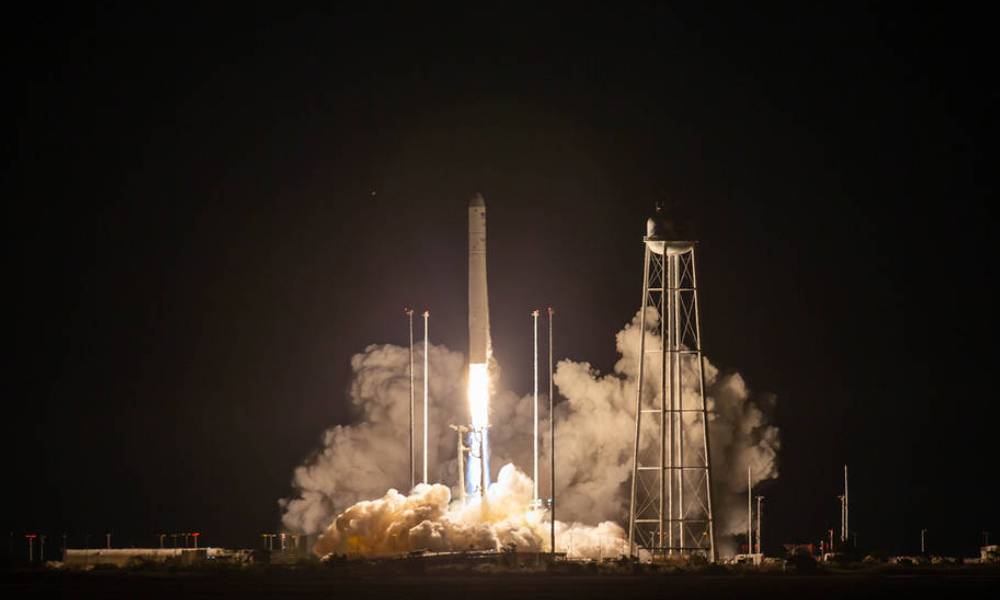
NASA sends science, cargo to Space Station on Northrop Grumman resupply mission
Launched on an Antares rocket, it is carrying nearly 8,000 pounds of scientific investigations, technology demonstrations, commercial products, and other cargo.

The future looks bright as the National Aeronautics and Space Administration (NASA) has sent a Northrop Grumman Cygnus resupply spacecraft to the International Space Station (ISS). The spacecraft launched at 9:16 p.m. EDT Friday, October 2 (6:46 am IST Saturday) from NASA’s Wallops Flight Facility on Wallops Island, Virginia is scheduled to arrive at the space station around 5:20 a.m. Monday, October 5 (2:50 pm IST).
Launched on an Antares rocket, it is carrying nearly 8,000 pounds of scientific investigations, technology demonstrations, commercial products, and other cargo. It is also Northrop Grumman’s 14th cargo flight and the third under its Commercial Resupply Services 2 contract with NASA.
As soon as it reaches the space station, Expedition 63 Commander Chris Cassidy of NASA, will use a robotic arm to capture Cygnus, while Ivan Vagner of Roscosmos will monitor telemetry during rendezvous, capture, and installation on the Unity module’s Earth-facing port. The spacecraft will then be at the ISS till mid-December before it makes its re-entry into the Earth’s atmosphere but not before disposing and burning thousands of pounds of thrash.
The spacecraft has an interesting delivery of cargo including a new toilet which has new improved features than the one that already exists; also helping plan future missions to Mars and the moon. Using a Universal Waste Management System (UWMS) and a Urine Transfer System, it will help automate waste management and storage while reducing the footprint, thus helping increase the number of crew members on the space station and future missions.
They are also exploring creating energy and water from waste, particularly through the investigation which is currently being carried out on the space station called Elucidating the Ammonia Electrochemical Oxidation Mechanism via Electrochemical Techniques, which examines ammonia oxidation in microgravity. It could not only help in an innovative water recovery system in space but also on Earth, especially in remote and arid areas.
Taking it a step further from their previous experiments in food which included growing lettuce and greens in the laboratory, they have now also sent radishes owing to the Assessment of Nutritional Value and Growth Parameters of Space-grown Plants. Cultivating the seeds could help understand how different soil and light conditions affect the growth and taste, according to NASA.
The experiments sent in the cargo will also help identify the treatment for cancer treatments. The Leveraging Microgravity to Screen Onco-selective Messenger RNAs for Cancer Immunotherapy (Onco-Selectors) investigation tests drugs based on messenger ribonucleic acids (mRNA) for treating leukemia. While in normal gravity, onco-selective drugs which are able to distinguish cancer cells from healthy cells, researchers have suggested that any drug which is able to showcase these traits in microgravity can become an ideal candidate for treatment by making affordable medicines and helping improve survival rates.
Interestingly, they are also busy creating an immersive experience of space walks in virtual reality, which is documenting life and research on the space station. In 2018, the ISS Experience partnered with its National Lab, TIME and Felix and Paul Studios to launch a customised 360-degree camera. However, now, they have modified the camera with the help of NanoRacks to withstand the extreme conditions to help film a spacewalk. The new camera, which will be mounted on the Canadarm2, will capture the entire walk and also get footage of the Earth and the exterior of the space station.
There are many investigations currently being done in the orbiting laboratory in the biology, biotechnology, physical and space sciences and about Earth. These will not only help keep the astronauts healthy but also help in planning future space missions including the Moon and Mars, through NASA’s Artemis program. It is also an attempt to further commercial space use. The efforts are particularly seen with the usage of Estée Lauder’s New Advanced Night Repair serum, which will be photographed in the station’s iconic cupola window to help develop a low-Earth orbit economy by encouraging businesses to invest in exploration.
For the uninitiated, the Cygnus spacecraft for this resupply mission is named after Kalpana Chawla, who was the first female of Indian descent at NASA. Unfortunately, the astronaut, who dedicated her life to understanding flight dynamics, lost her life during the STS-107 mission as Columbia, the space shuttle disintegrated on re-entering the Earth’s atmosphere.

